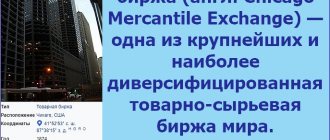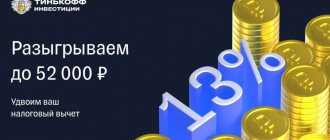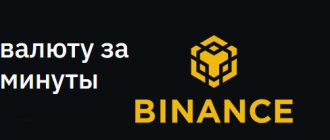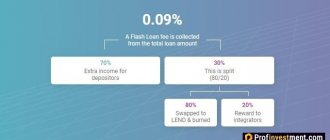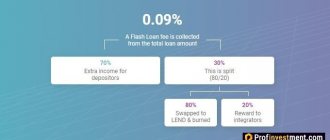Hello! In this article we will talk about the financial market and its participants.
Today you will learn:
- What is the financial market;
- What is the structure of the financial market;
- Who are the main market participants;
- Famous brokers on the Russian market - who are they?
When it comes to the concept of a market on a national or international scale, most often it is the exchange of goods or raw materials for banknotes. That is, something tangible is given in exchange for liquid funds. It is difficult for an ordinary person to imagine that on both sides of such an exchange there could be money in one form or another, acting as a commodity. No matter how strange this role may seem at first glance, it is the cornerstone that underlies the financial market, both domestic and global.
What are financial markets
Financial markets play a vital role in ensuring the smooth running of a capitalist economy by allocating resources and creating liquidity for businesses and entrepreneurs.
Markets allow buyers and sellers to easily trade their financial assets. Financial markets create securities that provide income to individuals/companies with excess funds (investors/lenders), and make these funds available to those who need additional money (borrowers).
The stock market is just one type of financial market. Financial markets are created through the buying and selling of numerous types of financial instruments, including stocks, bonds, currencies and derivatives. Financial markets rely heavily on information transparency to ensure that markets set efficient and reasonable prices. Market prices of securities may not be indicative of their intrinsic value due to macroeconomic factors such as taxes.
Some financial markets are small with little activity, while others, such as the New York Stock Exchange (NYSE), trade trillions of dollars of securities every day.
The stock market is a financial market that allows investors to buy and sell shares of publicly traded companies. The primary stock market is where new issues of shares, called initial public offerings (IPOs), are traded. Any subsequent trading of shares takes place in the secondary market, where investors buy and sell securities they already own.
The prices of securities traded in financial markets may not necessarily reflect their true intrinsic value.
Largest representatives
With the increase in trading activity, exchange platforms appear that occupy leading positions and are in demand among traders from all over the world. The most popular exchanges include:
- New York - has been operating since 2007, offers a huge selection of instruments, and is considered one of the largest in terms of capitalization.
- The London one is uniquely international, because almost half of the transactions are in shares. Moreover, the exchange itself has been operating for almost four hundred years.
- Tokyo is one of the largest platforms, operating since the end of the 19th century. Almost 80% of transactions throughout the country are carried out on it.
- Moskovskaya is gradually approaching its competitors in terms of trading volume and shows excellent dynamics. Occupies a leading position in the CIS. It has been operating since 1992, but in 2011 there was a major merger with RTS, which led to a new surge in popularity.
As you can see, global financial services markets are the basis for the development of the country’s economy and the criterion by which one can judge the success of the state in the international arena.
Types of financial markets
Here are the main types of financial markets.
Stock markets
Perhaps the most common financial markets are the stock markets. These are places where companies list their shares and are bought and sold by traders and investors.
Stock or equity markets are used by companies to raise capital through an initial public offering (IPO), with shares subsequently traded between various buyers and sellers in what is known as the secondary market.
Shares may be traded on listed exchanges, such as the New York Stock Exchange (NYSE) or NASDAQ, or on the over-the-counter (OTC) markets. Most stock trading takes place through regulated exchanges - they play an important role in the economy and are an indicator of the overall health of the economy, and provide capital gains and dividend income to investors, including those with retirement accounts.
Typical stock market participants include (both retail and institutional) investors and traders, as well as market makers and specialists who maintain liquidity and enable two-sided markets.
Brokers are a third party that facilitates transactions between buyers and sellers, but do not take an actual position in a stock.
OTC Markets
The over-the-counter (OTC) market is a decentralized market, meaning it has no physical locations and trading is conducted electronically, in which market participants trade securities directly between two parties without a broker.
While over-the-counter markets can handle trading of certain stocks (such as smaller or riskier companies that do not meet the exchanges' listing criteria), most stock trading occurs through exchanges. However, some derivatives markets are exclusively over-the-counter and therefore constitute an important segment of the financial markets.
Generally speaking, over-the-counter markets and the transactions that occur within them are much less regulated, less liquid, and more opaque.
Bond markets
A bond is a security in which the investor lends money for a specified period at a predetermined interest rate. You can think of a bond as an agreement between a lender and a borrower that provides details about the loan and its payments.
Bonds are issued by corporations as well as municipalities, states, and sovereign governments to finance projects and operations. The bond market sells securities such as notes and bills issued, for example, by the U.S. Treasury. The bond market is also called the debt, credit or fixed income market.
Money markets
Typically, money markets trade products with highly liquid short-term maturities (less than one year), which are characterized by a high degree of safety and relatively low interest yields.
At the wholesale level, money markets involve large transactions between institutions and traders. At the retail level, these include money market mutual funds, which allow individual investors to invest even small amounts of money, and money market accounts opened by bank customers.
Individuals can also invest in the money markets by purchasing short-term certificates of deposit (CDs), municipal bills, or Treasury bills, among other examples.
Futures Markets
A financial derivative is a contract between two or more parties whose value is based on an agreed upon underlying financial asset (such as a security) or set of assets (such as an index).
Derivative financial instruments are derivative securities whose value is determined solely by the value of the underlying security to which they are linked. The derivative itself is worth nothing.
Instead of trading stocks directly, the derivatives market trades futures and options contracts and other advanced financial products whose value is determined by underlying instruments such as bonds, commodities, currencies, interest rates, market indices and stocks.
In futures markets, futures contracts are quoted and traded. Unlike forwards, which are traded in over-the-counter markets, futures markets use standard contract specifications, are highly regulated, and use clearing houses to settle and confirm trades.
Options markets such as the Chicago Board Options Exchange (CBOE) similarly list and regulate options contracts. Both futures and options exchanges can list contracts for various asset classes, such as stocks, fixed income, commodities, and so on.
Forex market
The Forex foreign exchange market is a market where participants can buy, sell, hedge and speculate on exchange rates between currency pairs. The forex market is the most liquid market in the world because cash is the most liquid of assets.
The foreign exchange market processes more than $5 trillion in daily transactions, which is more than the futures and stock markets combined. Like over-the-counter markets, the Forex market is also decentralized and consists of a global network of computers and brokers from all over the world. The forex market consists of banks, commercial companies, central banks, investment management firms, hedge funds, as well as retail forex brokers and investors.
Commodity markets
Commodity markets are places where producers and consumers meet to exchange physical goods such as agricultural products (e.g. corn, livestock, soybeans), energy products (oil, gas, carbon credits), precious metals (gold, silver, platinum) ) or "soft" goods (such as cotton, coffee and sugar). These are known as spot commodity markets, where physical goods are exchanged for money.
However, the bulk of trading in these commodities occurs in derivatives markets, which use spot commodities as underlying assets. Commodity forwards, futures and options are traded on both over-the-counter and listed exchanges around the world, such as the Chicago Mercantile Exchange (CME) and the Intercontinental Exchange (ICE).
Cryptocurrency markets
The past few years have seen the emergence and growth of cryptocurrencies such as Bitcoin and Ethereum, decentralized digital assets based on blockchain technology. Today, hundreds of cryptocurrency tokens are available and traded worldwide through independent online exchanges.
These exchanges host digital wallets in which traders can exchange one cryptocurrency for another or for fiat money such as dollars or euros. Since most crypto exchanges are centralized platforms, users are vulnerable to hacking or fraud.
Decentralized exchanges are also available, which operate without any central control. These exchanges allow direct peer-to-peer (P2P) trading of digital currencies without the need for an actual exchange authority to facilitate transactions. Futures and options trading is also available for major cryptocurrencies.
Who is a trader
Most often, you probably imagine a kind of person in a strict business suit, carefully monitoring indicators on several monitors and studying various schemes mixed with complex graphs. And more often than not, the image turns out to be surprisingly true. Only here the costume is not necessary at all. The modern trader has long had access to trading through high technology. Using Internet platforms, he receives all the information necessary to conclude transactions.
This person monitors changes in exchange rates, securities indices, and studies economic news. Discipline and endurance are extremely important for him. You need to have strong nerves to wait for the required indicator and not break down ahead of schedule. In general, a trader’s job consists of two parts: analysis and execution of a transaction.
These market participants can be either professionals or amateurs. The former have a highly specialized education and work in brokerage companies, various analytical centers, and banks. Moreover, they definitely need a license to carry out their activities. Such a document is issued by the Central Bank of the Russian Federation.
The profession of a trader is associated with enormous risks and is a very responsible job. Any failure (accidental or intentional) threatens the company with large-scale losses. I can give one such clear example. In 2011, the Swiss bank UBS instantly lost just over $2 billion due to the fault of its specialist Kweku Adaboli, who made unauthorized transactions and hid it from his superiors.
There are 4 types of traders, whose activities are somewhat different from each other, since when performing trading operations they pursue different goals:
- speculators;
- arbitrageurs;
- hedgers;
- investors.
Amateurs are anyone who wants to make money from stock trading assets. The main condition is the availability of start-up capital. But education in this case fades into the background. As a rule, beginners turn to professionals for help or trade through intermediary firms.
Advantages of the financial market
The following are the advantages of the financial market.
- It provides a platform for companies to raise money in both the long and short term.
- Companies can raise capital at a lower cost compared to borrowing from commercial banks at a higher interest rate. In addition, commercial banks do not issue large volumes of loans.
- Companies may raise capital from the market from time to time as required until it exhausts its authorized share capital.
- Financial market intermediaries, such as banks and financial institutions, provide financial and strategic advice to companies and investors. They provide information, advice and expert services that may otherwise be unavailable.
- It provides a platform for simultaneous trading of multiple stocks, securities, bonds, derivatives, etc.
- Strict rules and regulations in the financial market inspire confidence among both investors and companies and help stimulate the economy.
- Provides a platform for international foreign exchange lending and borrowing.
Disadvantages of the financial market
Here we see some shortcomings of the financial market.
- Too many regulatory formalities can make the entire process lengthy.
- Sometimes companies cannot afford to enter the financial market due to strict rules and regulations. They cannot set up resources that need constant monitoring and compliance procedures.
- Investors can lose their money due to lack of information or ignorance.
- Companies may become more profit-oriented than investor-oriented. It is important that the Board of Directors makes decisions with all stakeholders in mind and avoids using investor money for its own profit.
Examples
The above sections clearly show that “financial markets” are broad in scope and scope. Below we look at two examples - the role of stock markets in bringing a company to IPO, and the over-the-counter derivatives market, which contributed to the financial crisis of 2008-2009.
Stock markets and IPOs
When a company is established, it will need access to capital from investors. As a company grows, it often needs access to much larger amounts of capital than it can obtain from current operations or a traditional bank loan.
Firms can increase this amount of capital by selling shares to the public through an initial public offering (IPO). This changes the status of a firm whose shares are owned by several shareholders to a publicly traded company whose shares will subsequently be owned by numerous members of the public.
An IPO also offers early investors in a company the opportunity to cash out part of their stake, often receiving a very handsome reward in the process. The initial IPO price is usually set by the underwriters during their pre-marketing process.
Once a company's shares are listed and begin trading on a stock exchange, the price of those shares will fluctuate as investors and traders evaluate and re-evaluate their intrinsic value and the supply and demand for those shares at any given time.
OTC derivatives and the 2008 financial crisis: MBS and CDOs
Although the financial crisis of 2008–2009 was caused and exacerbated by several factors, one widely recognized factor is the mortgage-backed securities (MBS) market. These are a type of over-the-counter derivatives in which the cash flows from individual mortgage loans are combined, split, and sold to investors.
The crisis was the result of a series of events, each of which had its own trigger, and culminated in the near collapse of the banking system. It has been argued that the seeds of the crisis were sown back in the 1970s with the passage of the Community Development Act, which required banks to relax their credit requirements for low-income consumers, creating a market for subprime mortgages.
The amount of subprime mortgage debt that was guaranteed by Freddie Mac and Fannie Mae continued to rise in the early 2000s as the Federal Reserve Board began sharply cutting interest rates to avoid a recession.
The combination of loose credit requirements and cheap money sparked a housing boom that fueled speculation, driving up home prices and creating a real estate bubble. Meanwhile, investment banks seeking easy profits after the dot-com bust and the 2001 recession created a type of MBS called collateralized debt obligations (CDOs) from mortgages purchased on the secondary market.
Because subprime mortgages were related to prime mortgages, investors were unable to understand the risks associated with the product. As the CDO market began to heat up, the real estate bubble that had been building for several years finally burst. As home prices fell, subprime borrowers began to forgo loans that were worth more than their homes were worth, accelerating the price decline.
When investors realized that MBS and CDOs were worthless because of the toxic debt they represented, they tried to divest. However, there was no market for CDOs. The ensuing cascade of failures of subprime lenders created a chain reaction of liquidity that reached the upper tiers of the banking system.
Two major investment banks, Lehman Brothers and Bear Stearns, collapsed under the weight of their risky loans, and more than 450 banks failed over the next five years. Several large banks were brought to the brink of bankruptcy and were rescued by taxpayer-funded bailouts.
Peculiarities
When considering the principles of operation of the MFR, it is necessary to take into account its features in the current conditions. Basic points:
- Lack of clear boundaries in time and space. Work is carried out without interruptions or obstacles from time zones.
- Acceleration of the scale and pace of development, which is becoming more noticeable every year.
- Limited participants. Most often, the main functions are assigned to banks, international structures, governments and brokers. In this regard, developing countries that have less capacity suffer.
- The main currency is the US dollar, followed by the pound, yen and franc. In particular, the main currency accounts for almost 60 percent of all transactions, and this number is constantly growing.
- The main flow of funds goes through transnational banks/corporations, state-owned enterprises, exchanges, state/local structures.
- The main feature is the ease of operations using modern computer technology and new systems. For example, the bulk of payments are made using SWIFT.
- The MFR is distinguished by its versatility, because many different operations pass through it: stock, credit, settlement and others.
FAQ
Here are a number of frequently asked questions about financial markets.
What types of financial markets are there?
Some examples of financial markets and their role are the stock market, bond market, Forex, commodity and real estate markets, and several others. Financial markets can also be divided into capital markets, money markets, primary and secondary markets, and listed and over-the-counter markets.
How do financial markets work?
Although they cover many different asset classes and have different structures and rules, all financial markets operate essentially by bringing together buyers and sellers of some asset or contract and allowing them to trade with each other. This is often done through an auction or price discovery mechanism.
What are the main functions of financial markets?
Financial markets exist for several reasons, but the most fundamental function is to ensure the efficient allocation of capital and assets in the financial economy. By providing a free market for the movement of capital, financial obligations and money, financial markets make the global economy smoother and also allow investors to participate in capital gains over time.
Why are financial markets important?
Without financial markets, capital could not be allocated efficiently and economic activities such as commerce and trade, investment and growth opportunities would be significantly curtailed.
Who are the main participants in financial markets?
Firms use the stock and bond markets to raise capital from investors; speculators turn to different asset classes to make targeted bets on future prices; hedgers use derivatives markets to reduce various risks; and arbitrageurs seek to take advantage of pricing errors or anomalies observed in various markets. Brokers often act as intermediaries who bring buyers and sellers together, receiving a commission or fee for their services.
Igor Titov
Economist, financial analyst, trader, investor. Personal interests – finance, trading, cryptocurrencies and investing.
Functions
There are two main functions of the global financial market, making it an invariable assistant in the development of the state’s economy. The main ones include:
- Accumulation of cash flows in the form of investments and savings. Savings are invested, or rather, they are redistributed into capital. The essence of investment is the transfer of currency/assets for use by the government of other countries/enterprises to make a profit in the future.
- Formation of asset prices based on supply/demand. The price depends on the profitability (dividend / interest payments, exchange rate differences, profit) that the investor receives during the investment process.
In addition, MFR financial transactions on the world market allow you to implement a number of additional functions:
- Mobilization of foreign exchange resources at the global level.
- Acceleration of currency exchange, which contributes to the development of global trade turnover.
- Providing an intermediary function between sellers/buyers.
- Creating conditions to reduce financial risks.
- Acceleration of currency turnover, optimizing the development of financial resources.
- Identification of the most promising areas for investment.




